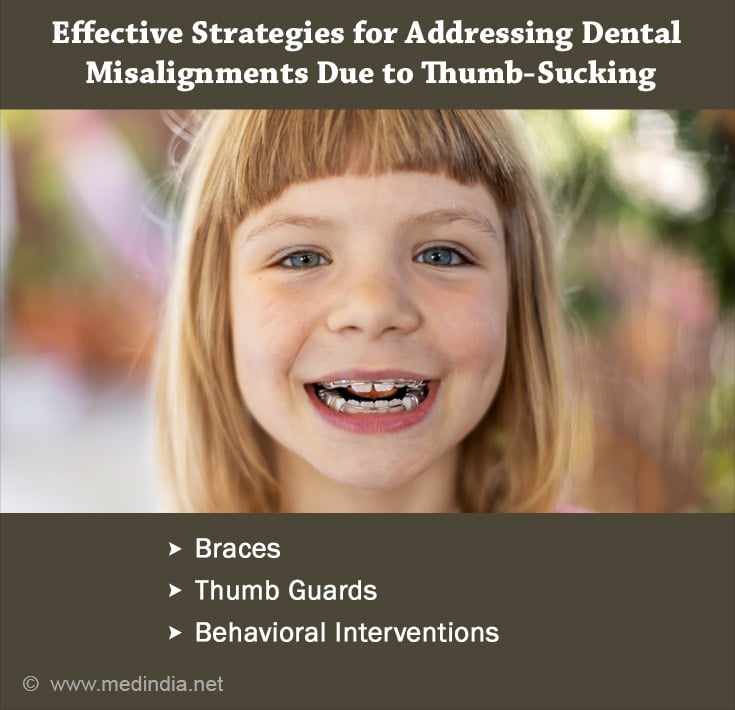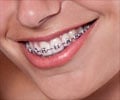- Thumb Sucking - (https://pubmed.ncbi.nlm.nih.gov/32310572/)
- Damage to the primary dentition resulting from thumb and finger (digit) sucking - (https://pubmed.ncbi.nlm.nih.gov/9017172/)
- Short- and long-term effects of thumb-sucking habit breaking appliance on speech in children - (https://pubmed.ncbi.nlm.nih.gov/9588163/)
- Occurrence of oral habits among preschool children with Autism Spectrum Disorder - (https://pubmed.ncbi.nlm.nih.gov/29142556/)
- Effects of pacifiers on early oral development - (https://pubmed.ncbi.nlm.nih.gov/17256438/)
About
Thumb sucking is a natural reflex for infants. It is a common comfort-seeking behavior in infants and young children that provides a sense of comfort and security. While it may provide a sense of security(1✔ ✔Trusted Source
Thumb Sucking
Go to source), the effects of prolonged thumb-sucking on a child's dental health can be significant. It is important to understand how thumb sucking can impact a child's teeth, and explore both short-term and long-term consequences, associated dental problems, and potential treatments.
What are the Dental Consequences of Thumb Sucking?
Misalignment of teeth is a common consequence, leading to issues like overbites, underbites, or open bites(2✔ ✔Trusted Source
Damage to the primary dentition resulting from thumb and finger (digit) sucking
Go to source). Changes in the palate, such as a high and narrow shape, may also occur. Thumb sucking can influence the position of the tongue, potentially leading to speech issues(3✔ ✔Trusted Source
Short- and long-term effects of thumb-sucking habit breaking appliance on speech in children
Go to source). Additionally, the pressure exerted on the teeth and surrounding structures may cause changes in the bone, impacting the overall facial structure. Recognizing these dental consequences underscores the importance of addressing thumb sucking early to mitigate potential long-term effects.
Long-term Effects of Thumb Sucking on Dental Health
Prolonged and vigorous thumb sucking can result in a myriad of long-term dental issues. It can lead to misalignment of teeth and affect the normal development of the jaw.
The physical side effects of thumb-sucking extend beyond dental misalignments. Intense thumb sucking can impact the eruption of teeth, causing them to come in at irregular angles. The pressure exerted by the thumb can lead to changes in the palate and affect the overall structure of the mouth.
Children who suck their thumbs intensely may experience crooked teeth, speech issues, and alterations in jaw shape. Misalignment of teeth may persist into adulthood, requiring orthodontic interventions. Changes in the jaw structure can contribute to temporomandibular joint (TMJ) issues, leading to pain and discomfort(4✔ ✔Trusted Source
Occurrence of oral habits among preschool children with Autism Spectrum Disorder
Go to source).
Recognizing Signs of Vigorous Thumb Sucking
Identifying the signs of intense thumb sucking is a critical aspect of addressing the habit early on. Parents should pay close attention to both physical and behavioral cues that may indicate the child's thumb sucking has become more forceful and persistent.
Physical Signs of Thumb Sucking:
One of the most apparent physical signs of vigorous thumb sucking is calloused or damaged skin on the thumb. The constant friction and pressure applied during intense sucking can lead to changes in the skin's texture, making it rough or calloused. Parents should routinely inspect the thumb for any signs of irritation, redness, or skin damage.Behavioral Cues of Thumb Sucking:
Beyond physical indicators, observing the child's behavior can provide insights into the intensity of thumb sucking. Children engaging in vigorous thumb sucking may display signs of emotional attachment to the habit, using it as a coping mechanism or source of comfort. Behavioral cues may include increased thumb sucking during stressful situations or heightened emotional states.
Monitoring Frequency and Intensity of Thumb-Sucking:
Keeping a record of when and how often thumb sucking occurs can be instrumental in assessing its impact. Parents can maintain a simple log noting the times of day or specific situations in which the child tends to suck their thumb more intensely. This data can aid in understanding the triggers for thumb sucking and guide efforts to address those triggers proactively.By combining vigilance in recognizing physical and behavioral signs with a proactive approach to monitoring thumb sucking frequency, parents can take informed steps to address the issue before it leads to long-term dental consequences. Early intervention not only preserves a child's oral health but also sets the stage for successful habit-breaking strategies.
Misalignment Treatment for Thumb Sucking
Addressing misalignments resulting from thumb sucking requires a multifaceted approach that combines orthodontic interventions with behavioral strategies. Timely intervention is crucial to prevent the long-term dental consequences associated with persistent thumb sucking(1✔ ✔Trusted Source
Thumb Sucking
Go to source).
Orthodontic Treatments:
In cases where thumb sucking has led to noticeable misalignments of the teeth, orthodontic treatments, such as braces, may be recommended. Braces are effective in gradually repositioning misaligned teeth, restoring proper alignment and bite. Orthodontists tailor treatment plans to the specific dental issues caused by thumb sucking, aiming for optimal results.Behavioral Interventions:
Breaking the thumb-sucking habit often involves behavioral interventions aimed at addressing the root causes of the behavior. Positive reinforcement techniques, such as reward systems or praise for not sucking the thumb, can motivate children to consciously avoid the habit. Open communication with the child about the importance of oral health and the impact of thumb sucking on their teeth can also contribute to behavioral change. Engaging children in activities that require the use of their hands can help distract from the thumb-sucking habit.Thumb Guards:
Thumb guards are devices designed to create a physical barrier, making thumb sucking more challenging and less satisfying for the child. These guards are typically worn on the thumb and act as a deterrent by interrupting the usual thumb-sucking pattern. Thumb guards are particularly useful for children who struggle to break the habit through behavioral approaches alone.Addressing Speech Issues Due to Thumb Sucking:
Intense thumb sucking can contribute to speech problems, including difficulty pronouncing certain sounds. Speech therapy may be necessary to address these issues and support overall language development.Monitoring and Support:
Consistent monitoring of the child's progress in overcoming thumb sucking is essential. Regular check-ins with parents, caregivers, and dental professionals provide opportunities to assess the effectiveness of chosen interventions and make adjustments as needed. Offering support and encouragement throughout the process reinforces positive behavior and helps the child feel empowered in their journey to break the habit.Impact of Pacifiers on Dental Health
Pacifiers, like thumb sucking, can impact a child's dental health. Prolonged pacifier use may result in similar dental misalignments and structural changes in the mouth(5✔ ✔Trusted Source
Effects of pacifiers on early oral development
Go to source). Moderation and timely weaning are essential for minimizing the impact on dental health.
Consulting a Doctor for Thumb Sucking
If parents observe persistent signs of vigorous thumb sucking, consulting with a pediatric dentist is advisable. Dental professionals can assess the extent of any dental misalignments or structural changes caused by intense thumb sucking. They can also guide suitable interventions and recommend age-appropriate strategies to help break the habit.
Collaboration with pediatric dentists and orthodontists is integral to the success of treatment. Dental professionals can closely monitor the impact of orthodontic interventions, provide guidance on the use of thumb guards, and offer tailored recommendations based on the child's specific dental needs. This collaborative approach ensures comprehensive care and a personalized strategy for each child.
By combining orthodontic expertise with behavioral interventions, parents and dental professionals can work together to address misalignments caused by thumb sucking effectively. This holistic approach not only corrects dental issues but also equips children with the tools and support needed to maintain optimal oral health in the long run.
Dental Care for Thumb Suckers
Children who engage in thumb sucking require special attention to their dental care routine. Regular dental check-ups are crucial to monitor any developing issues and provide timely interventions. Dentists can offer guidance on proper oral hygiene practices and recommend specific measures to mitigate the potential effects of thumb sucking on dental health. Implementing a thorough dental care routine, including regular brushing, flossing, and dental visits, is essential to maintain oral health and address any emerging concerns promptly.
Thumb sucking, while a common childhood habit, can have lasting effects on a child's dental health if not addressed appropriately. Recognizing the signs of intense thumb sucking, understanding its impact on dental development, and implementing positive strategies for breaking the habit are essential steps in safeguarding a child's oral health. Through proactive intervention and parental guidance, the negative effects of thumb sucking can be minimized, ensuring a healthy and well-aligned smile for the future.













